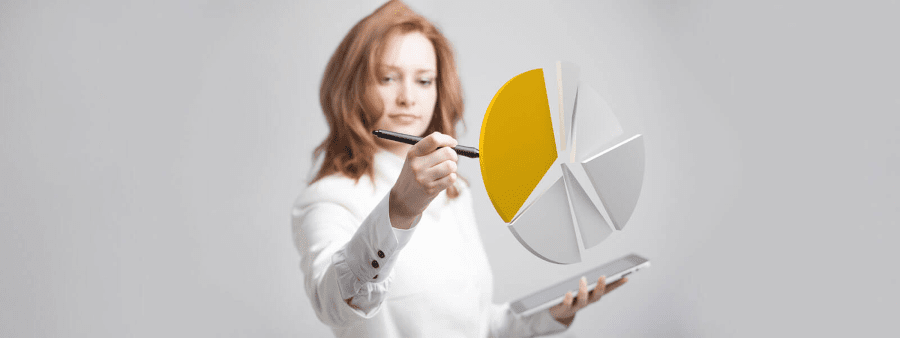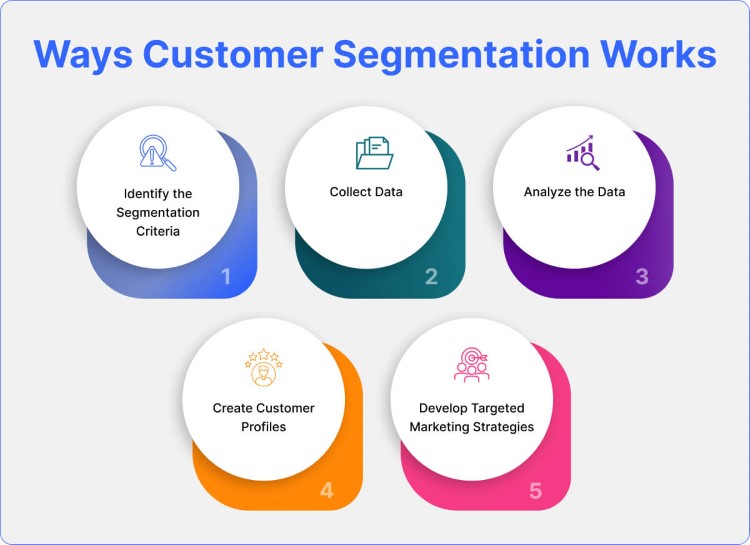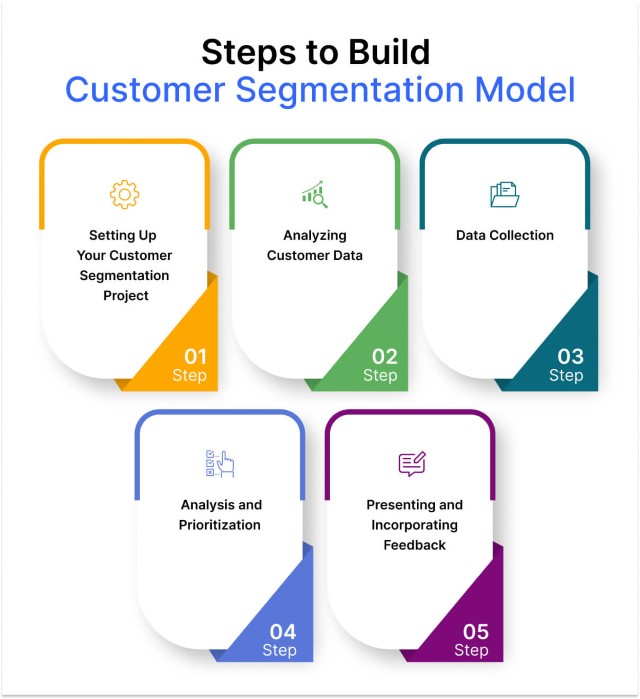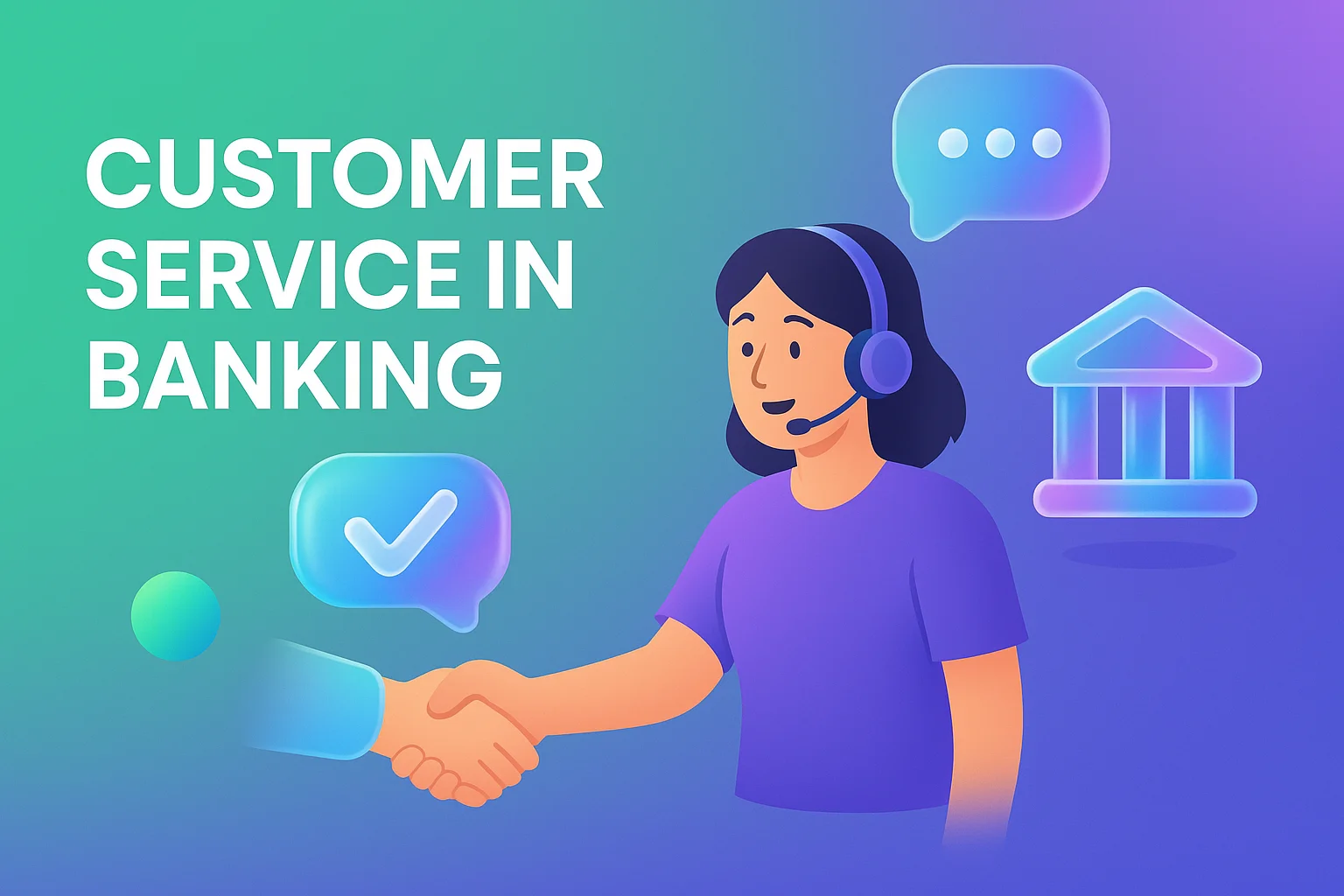Customer Segmentation Strategies, Types, Works & Steps
- May 15, 2023
- 8 mins read
- Listen

What is Customer Segmentation?
It is the process of dividing a larger group of customers into smaller, more homogeneous groups based on shared characteristics such as demographics, behaviors, needs, or preferences. The goal of customer segmentation is to identify groups of customers with similar characteristics and needs so that companies can tailor their marketing strategies and offerings to meet those specific needs.By segmenting customers, companies can better understand their customers and their behavior, and develop more effective marketing campaigns that are targeted toward specific customer groups. This can lead to improved customer satisfaction, increased sales, and ultimately, better profitability for the company.There are several different methods and techniques for customer segmentation, including demographic segmentation, psychographic segmentation, behavioral segmentation, and geographic segmentation. Companies may use one or a combination of these methods depending on their specific needs and goals. There is also the customer segment business model canvas to understand segmentation in detail.Customer Segmentation Strategy Types
There are several different types of customer segmentation strategies that companies can use to divide their customer base into more homogeneous groups. Here are some common types:
Here are some common types: - Demographic Segmentation: This involves dividing customers based on demographic factors such as age, gender, income, education, and occupation. For example, a clothing retailer might segment its customers by age group, offering different styles and promotions to teenagers versus middle-aged adults.
- Psychographic Segmentation: This involves dividing customers based on their personality, lifestyle, values, and attitudes. For example, a luxury car brand might segment its customers by personality type, targeting thrill-seekers who value speed and performance, versus more conservative customers who prioritize comfort and safety.
- Behavioral Segmentation: This involves dividing customers based on their behavior and actions, such as purchasing history, frequency of purchases, and brand loyalty. For example, a grocery store might segment its customers based on their buying habits, offering personalized coupons and promotions to frequent shoppers.
- Geographic Segmentation: This involves dividing customers based on their location, such as country, region, city, or neighborhood. For example, a restaurant might segment its customers based on their proximity to the restaurant, offering different promotions to local residents versus out-of-town visitors.
- Firmographic Segmentation: This involves dividing customers based on their company or organization characteristics, such as industry, company size, revenue, and location. For example, a software provider might segment its customers by industry, offering tailored solutions for healthcare, finance, and retail companies.
How Does Customer Segmentation Work?
Customer segmentation involves the process of dividing a company’s customer base into smaller, more homogeneous groups based on shared characteristics such as demographics, behaviors, needs, or preferences. Here’s how the process typically works:
Here’s how the process typically works:- Identify the segmentation criteria: The first step is to determine which characteristics to use as the basis for customer segmentation. This could be demographic factors like age or gender, behavioral factors like purchase history, psychographic factors like attitudes and values, or a combination of these.
- Collect data: Next, the company needs to collect data on its customers that relate to the chosen segmentation criteria. This can include customer surveys, purchase history, website analytics, social media data, and other sources of customer information.
- Analyze the data: Once the data is collected, the company needs to analyze it to identify patterns and trends among its customers. This helps to identify the different segments of customers and their shared characteristics.
- Create customer profiles: Based on the analysis, the company can create profiles for each segment of customers, describing their characteristics, needs, and behaviors. This helps the company to better understand each group of customers and tailor its marketing strategies and offerings to meet their specific needs. Customer profile helps in understanding the types of customers in marketing strategy.
- Develop targeted marketing strategies: Finally, the company can develop targeted marketing strategies for each segment of customers, using the information from the customer profiles to create personalized promotions, messaging, and experiences. This helps to improve customer engagement, satisfaction, and loyalty.
Benefits of Customer Segmentation
There are several benefits to using customer segmentation, including:A better understanding of customers: Customer segmentation helps companies gain a deeper understanding of their customers and their needs, behaviors, and preferences. This enables the company to create more personalized and targeted marketing strategies that resonate with each customer group.Improved customer engagement: By tailoring marketing messages and experiences to specific customer segments, companies can improve customer engagement and satisfaction. Customers are more likely to respond positively to marketing campaigns that speak directly to their needs and interests.Increased sales and profitability: It can lead to increased sales and profitability for the company. By focusing on the most valuable customer segmentsand tailoring offerings and promotions to their specific needs, companies can generate more revenue and increase their bottom line.Cost savings: It can help companies to save money by avoiding unnecessary marketing expenses. By targeting only the most valuable customer segments, companies can avoid wasting resources on ineffective campaigns and channels.Competitive advantage: Companies that use customer segmentation to create more personalized and targeted marketing strategies can gain a competitive advantage over their rivals. By better understanding their customers and offering tailored solutions, companies can differentiate themselves and attract more loyal customers.5 Steps to Build Your Customer Segmentation Models
While there are different approaches to building a customer segmentation strategy, here are five steps that can guide the process:



